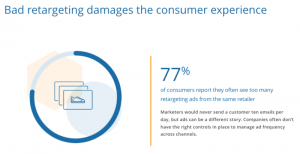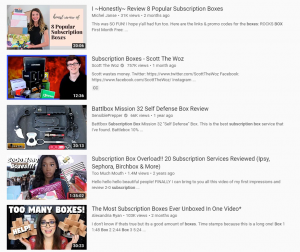— March 7, 2019
Blogging might feel like the bane of your business’s existence. You keep up with a regular blog schedule, write on riveting topics week after week, craft high-quality content, and then…crickets. What’s stopping people from reading your blog? It could be a number of things – many of which might have nothing to do with your writing and everything to do with technical details. Use this simple troubleshooting guide to get to the bottom of your clogged blog.
SEO Pitfalls
Search engine optimization (SEO) could be the reason no one is seeing your blog. It’s not that your readers are ignoring your content – it’s that they can’t see it to begin with. SEO best practices change regularly according to new search engine algorithms, but many basics stay the same. SEO depends on keywords, meta titles, images, alt image tags, headlines, subheads, white space, and many other elements search engines use to rank your site. Here’s how it works:
- You optimize your website for search engines. Your goal should be to create blog content your target audience will want to read, because this is what will get you positive attention from search engines. Focus on relevancy, quality, and personalization.
- Google and other search engines send out “crawlers” to review your site. Crawlers are automated scripts that collect data from websites to give to the search engine. It visits URLs and basically judges them based on their page elements.
- You receive a rank. The search engine will then use the data from its crawlers to rank your website. It will use algorithms to rank your site based on key performance indicators and page elements. Your rank will decide how far up or down your page appears during search queries.
If you aren’t optimizing your blog posts for SEO purposes, your content could be virtually invisible to your target audience. You must do your research and tailor your content for a better position on the search engine page rank (SERP), or else outsource a professional SEO company to do so for you. Online SEO checkers exist to help you identify and avoid pitfalls in the future. Shaping up your blog for perfect SEO can make a world of difference in your number of views.
Wrong Keywords (or No Keywords)
Keywords are essential for SEO purposes. Your blog content should contain keywords that are relevant and trending in your industry. If you are a lawyer, for example, your blog could focus on keywords such as, “personal injury,” “car accident,” and “fault laws.” Inserting these keywords at an ideal density can improve your SERP position and get more visibility for your blog posts. Use a free resource such as the Google Keyword Planner to get the correct keywords for your audience.
You could go wrong with keywords in many different ways. You may not be using relevant keywords for your target audience, or you might not have realized you needed keywords at all. You could also be guilty of keyword stuffing – something Google has condemned in the past. Keyword stuffing refers to filling your content with keywords solely for SEO purposes, rather than for the benefit of the reader. Search engine crawlers can pick up on the difference and will penalize websites that load content with too many keywords.
Content That Misses the Mark
Where did you come up with your blog topic? Did it just come to you, or was it steeped in consumer data and research? It’s important to write about topics your audience will find intriguing. Relevancy is everything when it comes to getting views for your blog. Search for trending topics to write about in your industry through Google News. Sign up for alerts to be the first to know about new developments. Join a subscriber’s list for news from a high-authority site in your niche, and then craft pieces into your own blogs.
Create a target persona, then gather data about what that consumer searches for online. Use keyword planners and editorial calendars to stay on top of your blog strategy. See what your competitors are posting. Look for posts on other websites that got a lot of views and comments. Then, craft your own version, with a unique take on the topic. Hone in on relevancy, and see if that helps boost your readership.
Leaving Your Readers Wanting
There is such a thing as a blog post that’s too short, although you can never really go too long. Blog posts that are 200 words or less simply might not be doing the trick for your audience. It might not give enough relevant or valuable information or have enough room for SEO elements. Although the number changes with algorithm updates, statistics show that the ideal length for a blog post is around 1,000 words. The minimum should be 300, but around 1,000 tends to rank best with search engines. Put quality over quantity, however; make sure every word you write serves a purpose.
Posting Inconsistently
You can’t expect to gain a loyal readership if you only post sporadically. Readers want to be able to rely on you for consistent, relevant news and information. They will subscribe to blogs that give them a steady stream of useful or entertaining information. They are less likely to subscribe if they glance at your blog and see you haven’t posted in the last year. Consistent posting is one of the keys to a successful business blog.
If you can’t keep up with a content schedule, consider using an automated system and writing your posts ahead of time. You could also outsource your blog posts to experts who understand SEO best practices and the secrets to great blogging. Outsourcing your blog could free up time and resources at your company, while still delivering ROI. You can give your readers the exceptional, consistent blog they deserve without taking time away from your team.
Digital & Social Articles on Business 2 Community
(67)







